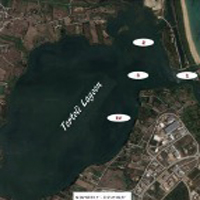New evidence of pectenotoxins in farmed bivalve molluscs from Sardinia (Italy)

Submitted: 28 July 2020
Accepted: 22 March 2021
Published: 21 June 2021
Accepted: 22 March 2021
Abstract Views: 1413
PDF: 477
HTML: 21
HTML: 21
Publisher's note
All claims expressed in this article are solely those of the authors and do not necessarily represent those of their affiliated organizations, or those of the publisher, the editors and the reviewers. Any product that may be evaluated in this article or claim that may be made by its manufacturer is not guaranteed or endorsed by the publisher.
All claims expressed in this article are solely those of the authors and do not necessarily represent those of their affiliated organizations, or those of the publisher, the editors and the reviewers. Any product that may be evaluated in this article or claim that may be made by its manufacturer is not guaranteed or endorsed by the publisher.

 https://doi.org/10.4081/ijfs.2021.9281
https://doi.org/10.4081/ijfs.2021.9281



